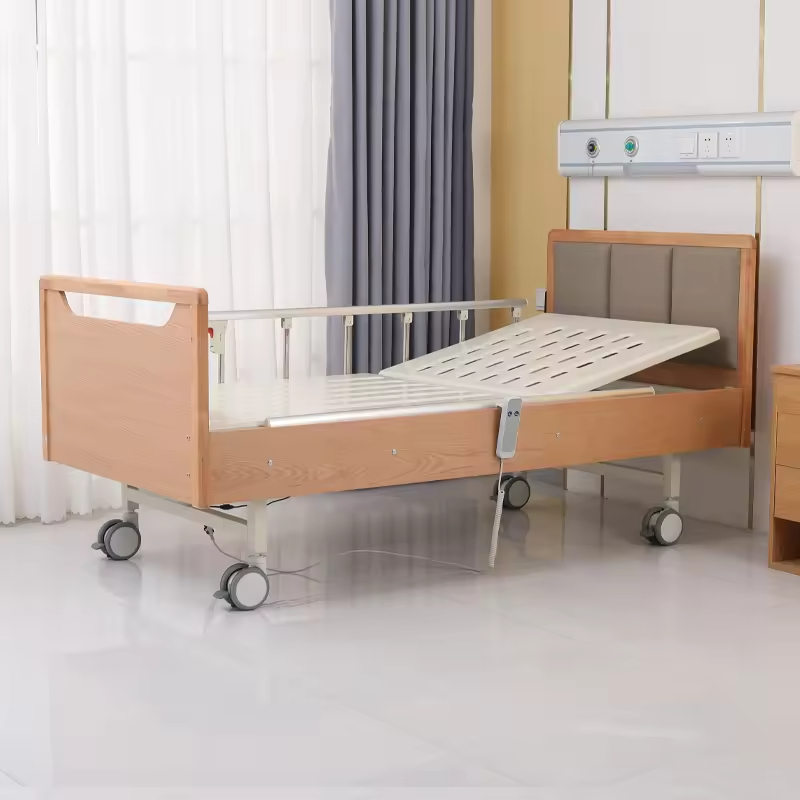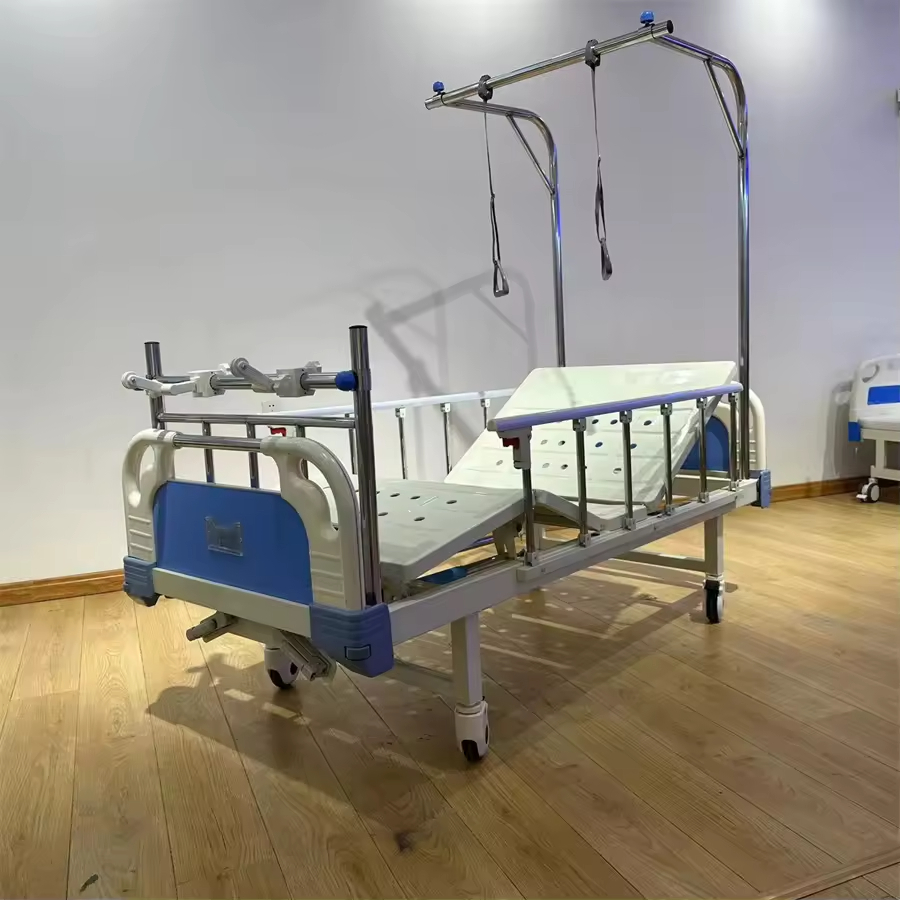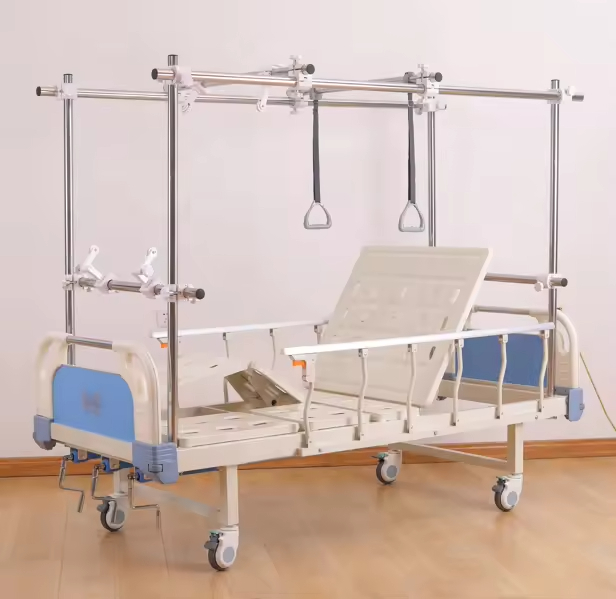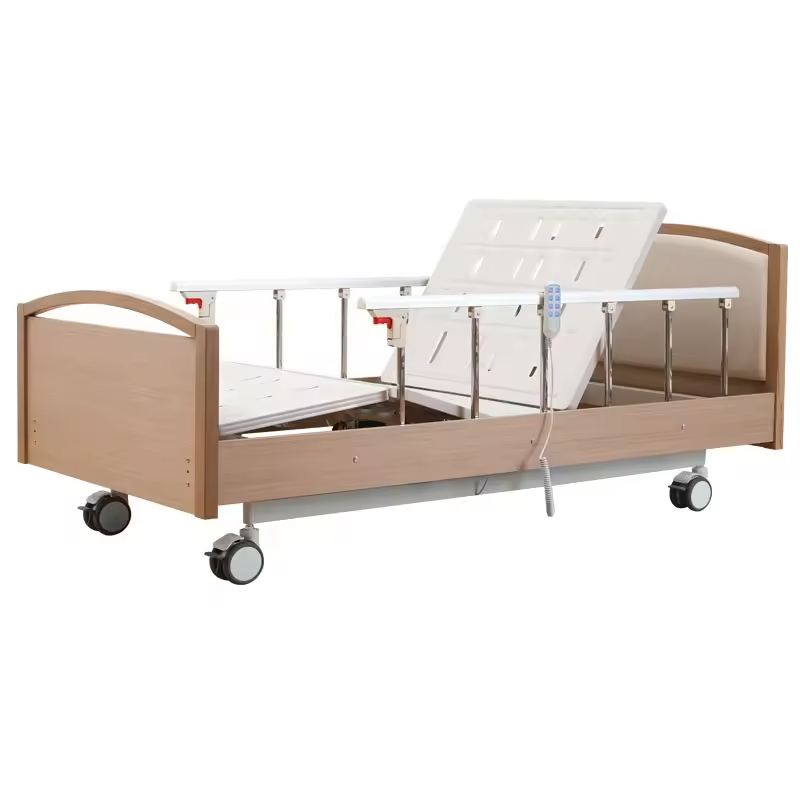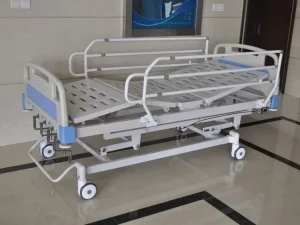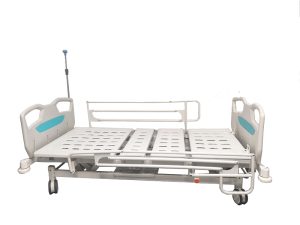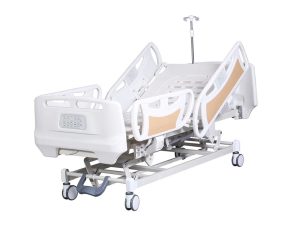Table of Contents
News
Contact Us
Description
Overview
A specialized electric tilt bed tailored for physiotherapy in rehabilitation centers is a high-performance medical rehabilitation device, meticulously engineered to support patients throughout standing and positional training. Built with durable steel, it places top priority on stability, safety, and ease of use—serving as a core, reliable tool to assist patients in rebuilding mobility, regaining muscle strength, and accelerating their return to independent daily activities. Below is a comprehensive breakdown of its core advantages, targeted application scenarios, technical specifications, and operational considerations, tailored to the needs of rehabilitation centers.
Main Functions
- Neurorehabilitation
- For stroke patients: It helps restore the balance ability in the upright position, stimulates the proprioception of the lower limbs, and prevents muscle atrophy and joint contracture caused by long – term bed rest.
- For spinal cord injury patients: It promotes blood circulation in the lower limbs, prevents deep vein thrombosis, and improves postural hypotension through progressive upright training.
- For patients with Parkinson’s disease or multiple sclerosis: By slowly adjusting the angle, it enhances postural control ability and neuromuscular coordination.
- Orthopedic Post – operative Rehabilitation
- After fracture or joint replacement surgery: In the early non – weight – bearing stage, upright training can reduce bone loss and prevent joint stiffness.
- After spinal injury or surgery: It maintains spinal stability through safe angle adjustment and gradually restores the upright posture.
- Cardiopulmonary Function Training
- For long – term bed – ridden patients: The upright position can increase the thoracic cavity volume, improve lung ventilation function, and reduce the risk of hypostatic pneumonia.
- For patients with cardiopulmonary diseases in rehabilitation: It adjusts the cardiac load through postural changes and gradually enhances cardiovascular adaptability.
- Prevention of Complications
- Pressure ulcer prevention: It reduces continuous local pressure on the body, such as the sacrococcygeal region, and improves blood circulation.
- Digestive and urinary system functions: The upright position promotes intestinal peristalsis and bladder emptying, reducing the risk of constipation and urinary tract infections.
Key Features
- Electric Tilt Function: Most electric tilt beds can be tilted smoothly from 0° to 90° or other angles, such as the Morecare electric tilt table, which can be tilted from 0° to 90°, and the Synergy – C Dynamic Tilt Table, which can be tilted from 0° to + 85°. This function allows for gradual upright positioning, which is essential for circulatory stimulation and postural adaptation.
- Safety Devices: Generally, it is equipped with safety straps, such as the three – point safety strap system of the Morecare electric tilt table, which secures the trunk, pelvis, and legs to prevent patients from falling during therapy.
- Adjustable Accessories: There are adjustable footrests, and some electric tilt beds, like the Morecare electric tilt table, have footrest angles of – 45°, 90°, and 135°. There are also adjustable armrests and activity trays to meet the needs of different patients for training and activities.
Key Specifications
- Product Type: Electric tilt bed (physiotherapy-focused)
- Material: Cold-rolled steel (frame) for long-lasting durability in high-use rehab settings
- Dimensions: 1900×600×500mm
- Weight Capacity: 170kgs
- Color: Blue
- Core Function: Electric tilting (supports controlled posture adjustments for standing and physiotherapy exercises)
- Certification: ISO 9001 (meets international quality standards)
- Warranty: 3 years
- After-Sale Support: Online technical assistance
Packaging & Delivery
- Packaging: Standard carton box; custom packaging available per customer request
- Dispatch Ports: Tianjin Port, Beijing Port
- Selling Units: Single item
- Supply Capacity: 1000 pieces per month (suitable for bulk orders from rehabilitation centers or medical facilities)
Customization & Usage
- Customization: OEM & ODM services available to adapt to specific rehabilitation center needs (e.g., adjusted dimensions, additional safety features).
- Ideal For: Rehabilitation centers, where it aids physiotherapy for patients recovering from injuries, surgeries, or mobility-impairing conditions (e.g., stroke, spinal cord injuries, or post-surgery rehabilitation). The electric tilt function enables gradual, controlled positioning—critical for safe standing training and reducing strain on patients and therapists.
An electric tilt bed for physiotherapy is a medical rehabilitation device that helps patients transition from a lying position to an upright position through electric adjustment of the angle, simulating the natural standing state of the human body. It is widely used in the field of modern rehabilitation medicine. Here is a detailed introduction:rests and footrests play a role in supporting and adjusting the position of the patient’s body, and the fixing belt is used to fix the patient’s body to ensure safety.
Structure Composition
An electric tilt bed is usually composed of a bed board, a lifting frame, a handheld operator, armrests, a footrest, a fixing belt, etc. The bed board is the main part for patients to lie on, the lifting frame realizes the tilting function of the bed board, the handheld operator is used for controlling the angle and height of the bed board, the armrests and footrests play a role in supporting and adjusting the position of the patient’s body, and the fixing belt is used to fix the patient’s body to ensure safety.






